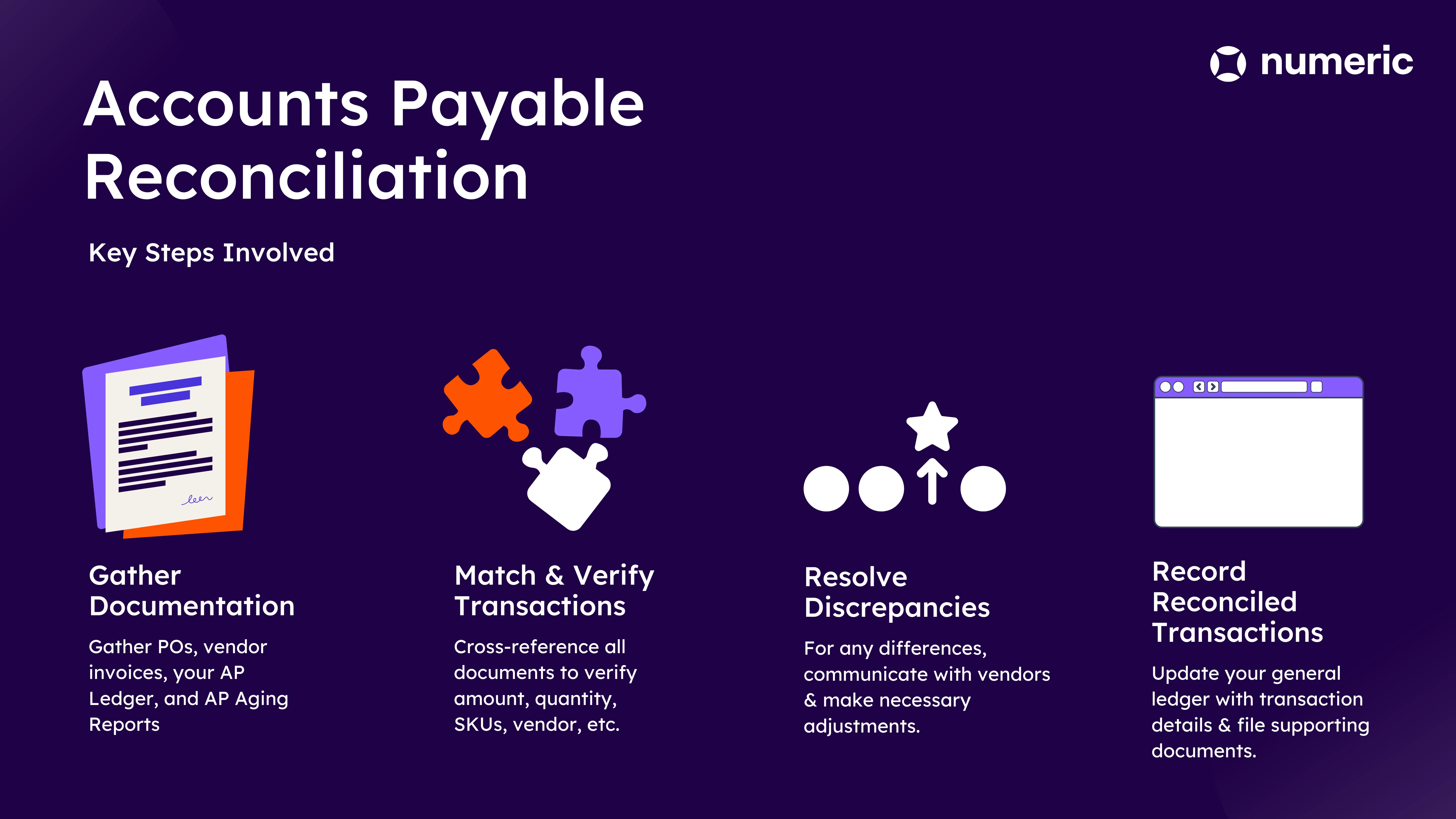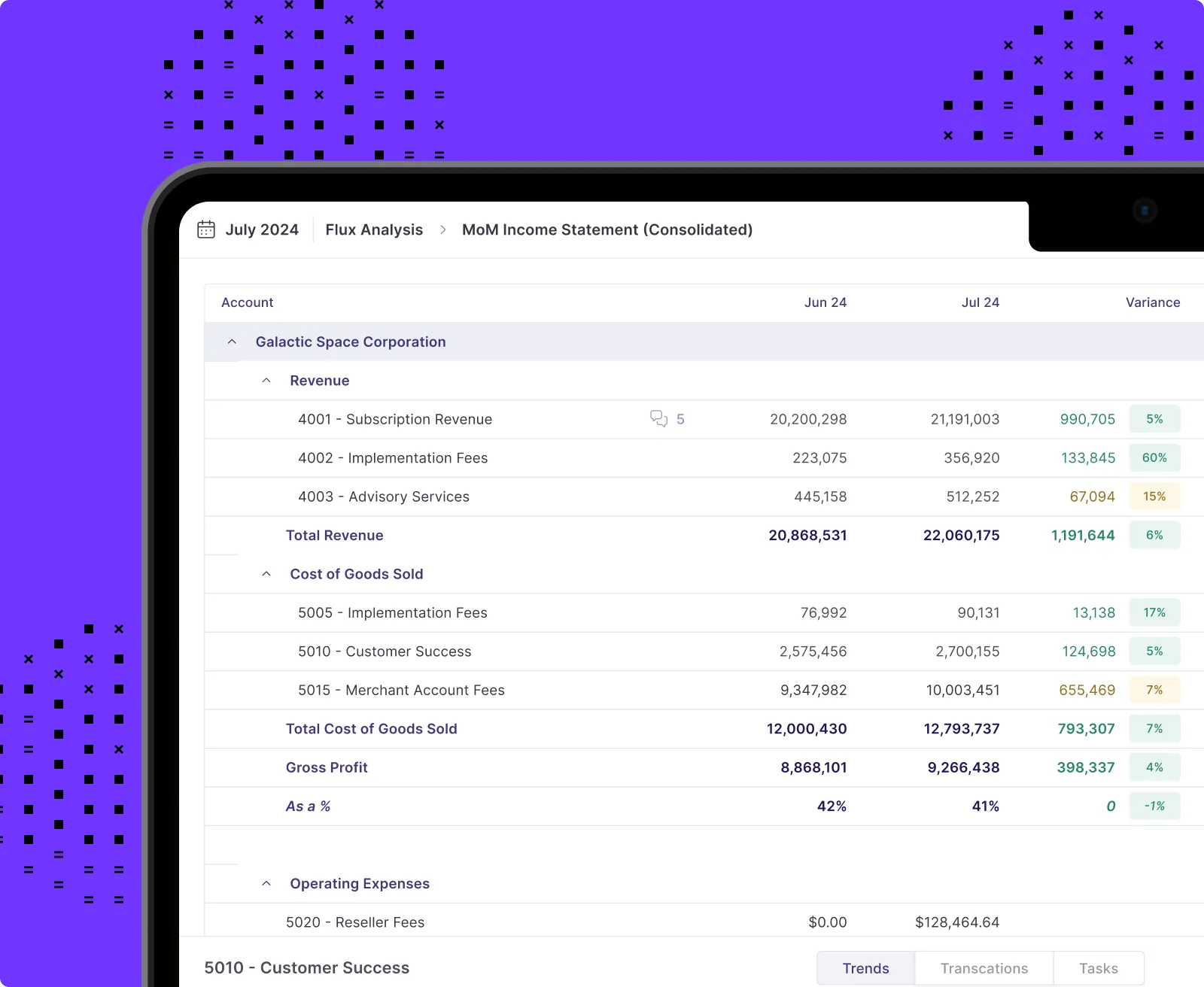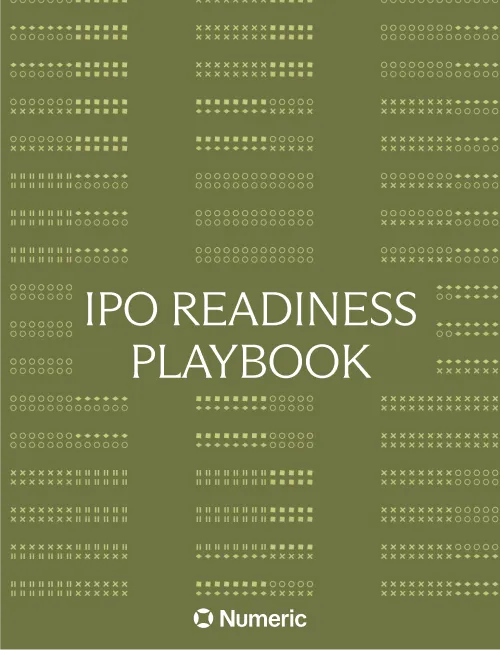Everything You Need to Know About Accounts Payable Reconciliation
.webp)
Ultimately, the role of accounting is ultimately to inform business decisions. Given that quite a few business decisions boil down to cash flow — accounts payable emerges as a critical account to get right.
In this article, we break down what it is, how it’s done, tactical examples, and best practices.
Definition of Accounts Payable Reconciliation
Before we dive deep, let’s establish a common language.
Accounts payable reconciliation is the process of verifying the accuracy of the amounts owed by a business to its suppliers by comparing internal records against invoices and statements received from vendors. The verification is crucial — it ensures that payments are accurate, justified, and free from errors or fraud.
Think of it as the financial equivalent of matching your socks — necessary, satisfying, and a bit puzzling when things don’t line up.
This process isn't just a good practice; it's an essential audit of the trail of commitments and expenditures that keeps a business solvent and trustworthy.
Keep in mind that AP reconciliation can also refer to reconciling AP during your month-end process. And if you read that and immediately wondered why month-end recs for AP are necessary in the first place, keep reading. We’ll cover both types of reconciliation in this article.
Importance of Accounts Payable Reconciliation
And why should you carve out time for it?
Reconciliation of accounts payable safeguards a company from overpayments, missed discounts, and fraudulent charges, directly influencing the integrity of financial reports and the overall financial health of the business.
The process also provides a clear picture of a company’s outstanding liabilities, which is essential for effective cash flow management.
The Accounts Payable Reconciliation Process - Ongoing
So how’s it done? Naturally, your AP reconciliation process is unique to your company context. That being said, the following steps tend to be true across the board:

Before You Start (or Step 0)
Ahead of diving into your reconciliation, first double check that prior periods were properly reconciled. You’ll want to confirm that the beginning balance of the current month’s report matches with the ending balance of the prior month’s report. If they match, green flag to continue. Otherwise, you’ll need to reconcile prior periods before jumping into the current month.
Step 1: Gathering Necessary Documents
With a green light on the above, you’re ready to begin reconciling. Tactically, this often involves scanning either AP specific software or an ap@company address to locate the below.
- Vendor Invoices & Purchase Orders- Official documents issued by a business to a supplier, indicating types, quantities, payment terms, and agreed prices for products or services.
- Accounts Payable Ledger- All of the transaction activity to date for your AP account
- Accounts Payable Aging Reports - The report summarizing the bills and invoices owed by a business, broken down by vendor and due date
- Bank Statements - Records of your payment to vendors.
Step 2: Matching and Verifying Transactions
Time to triangulate— you’ll want to pull together POs, invoices paid, and your AP aging report to ensure they all check out. This will involve:
- Three-Way Matching - For inventory, you’ll want to review purchase orders, invoices, and receiving reports to ensure consistency and accuracy in records and payments. Do the goods you received match the invoices and POs? Are vendor details, like price and quantity consistent across your payment records?
- Two-Way Matching - For software and other non-physical purchases, you’ll cross-reference the PO and invoice to ensure they match. Then ensure the amount aligns with your AP aging report.
- Identifying Discrepancies - Spotting any mismatches in prices, quantities, or terms as documented in the purchase orders, invoices, and receiving reports. If you spot any discrepancies, it's time to investigate further.
Step 3: Resolving Discrepancies
Found any differences? In this step you’ll make required adjustments to ensure accuracy.
- Communicating with Vendors - Contacting vendors to discuss and resolve discrepancies, which may involve correcting invoice errors or adjusting delivery counts.
- Making Necessary Adjustments - Adjusting accounting records to reflect resolved discrepancies, ensuring that records are accurate and up-to-date.
Step 4: Recording Reconciled Transactions
- Updating the General Ledger - Ensuring all corrected transactions are updated in the general ledger.
- Filing Supporting Documents - Organizing and filing all relevant documents in a manner that supports audit trails and financial audits. Typically this looks like clear folders with accounting period labels or housed in software like Ramp, Coupa, or Zip, etc..
Accounts Payable Reconciliation at Month-End
We’ve covered ongoing AP reconciliation that’s typically done on a weekly or even daily basis for each invoice received. What does the gold star reconciliation process look like for AP at month-end?
Unlike reconciliations like fixed assets with clear workpapers and the GL, AP reconciliation is a unique case. You’re typically pulling the trial balance from your AP ledger and your AP aging report, both from the GL. With the same data-set involved on both sides, they’ll naturally tie out.
So why do the reconciliation in the first place? For AP month-end reconciliation, you're searching for any anomalies and flagging errors in the underlying reporting. Your AP Rec is a sanity check and a good step towards strong data hygiene. Look for:
- Are you posting anything in AP without a vendor attached? Without a department or other key category?
- Are integrations functioning properly? Ex. if you’re leveraging a Bill.com or Glean.ai for AP, scan briefly to check integration health
- Do you have unapplied vendor payments? These typically present themselves as open bills and open payments in different buckets within the AP Aging. You should take the step to apply the payments to the open invoice to avoid confusion or potential double payment in the future.
- Have you overpaid or short-paid any of your vendors? For overpayments, consider whether this amount represents a prepayment, an amount due back from the vendor, or represents and unrecoverable amount that should be expensed. For short-payments, ensure you are in communication with the vendor or any future vendor credits you are expecting to receive that would cover the short-payment or have a plan to pay the difference owed.
- Assess whether any invoices received have not yet been posted to AP because of missing and incorrect information (e.g. missing PO). If so, you’ll want to assess whether you need to book an accrual for this invoice.
AP reconciliation for balance sheet recs is less about tying out and more about ensuring the underlying information is complete and accurate. That being said, occasionally teams do want more detail or flexibility for tracking AP Aging than what's possible in their ERP, so we built a AP reconciliation template here for accounting teams that need a separate AP workpaper.

Accounts Payable Reconciliation in Practice
We’ve covered key steps, now what does this look like for a hypothetical SaaS company? Let’s take the example of SaaSy a hypothetical tech company that sells software that makes your emails sassier. Doesn’t exist, but we certainly wish it did.
Across the month, Sarah, the savvy accountant at SaaSy, is ready to tackle the accounts payable reconciliation. After putting on her "I Make Spreadsheets Sassy" t-shirt she gathers all the necessary documents, including:
- Purchase orders, including for the custom emoji delivery
- Invoices from providers, including an invoice for custom emoji creation (Apple’s defaults weren’t quite sassy enough for the emails)
- Vendor statements detailing prior transactions
Next, Sarah starts matching transactions. She compares the invoices, purchase orders, vendor statements, and her AP aging report. She spots a discrepancy.
The invoice for the "Sarcasm 2.0" software update doesn't match the purchase order.
Sarah reaches out to the vendor, "Next Level Emojis" Together, they discover that the purchase order was for the "Snark 1.5" update, not "Sarcasm 2.0." They make the necessary adjustments.
With the discrepancy resolved, Sarah records the reconciled transactions in the general ledger. She updates the accounts payable balances in the AP aging ledger and files away the supporting documents in her meticulously organized "Sassy Finances" folder.
At month-end, Sarah then pulls the trial balance of the AP ledger and the AP aging report, ensuring that both tie out and then scanning for missing vendors, departments, and confirms her integration with an AP tool is functioning appropriately.
Best Practices for Accounts Payable Reconciliation
You’ve grasped the basics of AP reconciliation and the overall process, now time to incorporate best practices to cut down on errors and time spent reconciling.
Establish a Regular Reconciliation Schedule
Adhering to a consistent schedule for reconciling accounts payable can prevent the accumulation of errors and help maintain real-time oversight over financial transactions.
Go on and add AP reconciliation to a weekly or daily calendar block and your month-end checklist. And add a broader AP review to your year-end checklist as well to evaluate AP operations for efficiencies and double check completeness.
At Catalyst Fund, for example, the team established a daily, weekly and monthly cadence of AP reconciliation tasks.
“We enter all invoices into our system as they arrive and verify against purchase orders. We do a preliminary reconciliation weekly to address issues promptly. Our comprehensive monthly reconciliation is more thorough, ensuring all records align with bank statements and ledgers” states Richard Morgan.
Maintain Organized Records
An organized accountant is a happy accountant. Keeping financial documents organized is crucial for quick retrieval and efficient reconciliation processes. This practice aids in faster resolution of discrepancies and more effective audits.
Implement Internal Controls
Developing a robust system of internal controls, including separation of duties and authorization requirements, minimizes the risk of errors and fraud. Assign clear preparers and reviewers in Numeric for AP month-end tasks and keep all documentation in one place.
Leverage Automation and Technology
Accounts payable software is a frequent pick for Controllers looking to minimize manual work given how time-consuming the manual reconciliation process can be. Using AP automation software can streamline the reconciliation process, reduce human error, and increase efficiency.
Considering options? We’ve laid out the top tools in your accounting tech stack.
Common Challenges in Accounts Payable Reconciliation
Missing or Incomplete Documentation
Incomplete documentation can lead to reconciliation errors like failing to take into account an early payment discount. Ensuring complete paperwork is essential for accurate accounting — we also empathize with the cross-team communication you’ll need to ensure accurate documentation.
One recommendation here? Automate emails sent to the team to ensure all invoices, POs, and relevant documents are submitted each close.
Inconsistent Data Entry
Inconsistent data entry can cause discrepancies in financial records. Standardizing data entry procedures via accounting software or workflows in automation tools can help mitigate these issues. Outline a clear accounts payable policy and be sure to share it when on-boarding accountants to your team.
Vendor Disputes
We won’t hide the obvious truth — communicating with vendors can be frustrating. Effective communication and clear documentation are key to resolving vendor disputes efficiently, centralizing your AP communication under a single shared email and establishing clear turnaround protocols can go a long way to controlling the controllables.
Benefits of Effective Accounts Payable Reconciliation
Improved Financial Accuracy
Accurate reconciliation ensures reliable financial statements.
Enhanced Cash Flow Management
Effective management of accounts payable affects a company's cash flow positively by avoiding unnecessary penalties and taking advantage of credit terms.
Stronger Vendor Relationships
A well-oiled accounts payable reconciliation process can work wonders for your vendor relationships and avoid late payments. Regular and accurate reconciliation fosters trust and reliability in business relationships.
Reduced Risk of Fraud and Errors
Consistent reconciliation practices and strong internal controls for AP processes reduce the risk of costly errors like duplicate payments and fraudulent activities.
Frequently Asked Questions (FAQ)
How Often Should Accounts Payable Reconciliation Be Performed?
The frequency of your accounts payable reconciliation depends on your company's size and transaction volume. As a general rule of thumb, aim for at least once a month.
However, if you have a high volume of transactions or complex accounts payable processes, your accounting team may want to reconcile more frequently, such as weekly or even daily.
What Are the Most Common Errors Found During Reconciliation?
Common errors include double billings, missed discounts, and incorrect amounts billed.
How Numeric Helps Accounting Teams with AP Reconciliation
Numeric helps accounting teams manage fast, audit-ready month-end closes with AI and automation. For AP Reconciliation, Numeric helps teams:
- Manage balance sheet reconciliations in a single place: For month-end AP recs, teams upload their AP aging report to tie out with the trial balance automatically pulled from their GL. With a deep ERP integration, Numeric users can click into underlying AP transactions to investigate. Prior period balance monitoring also catches any changes since accounts were reconciled.
- Remain organized and audit-ready with clear controls and documentation: Assign reviewers and preparers of AP reconciliation tasks and capture all comments, changes, and task submissions. Auditors then directly log-into Numeric with a clear activity trail, no need for your team to spend hours resurfacing required documentation.
- Report easily on AP transactions and enable FP&A: Pivoting transactions by vendor? Grouping by department? Numeric integrates every transaction line from your ERP to enable quick reporting as a part of the month-end close process. With view-only access roles included in all accounts, FP&A teams can check actuals directly in Numeric to monitor how much was spent and monitor cash flow without needing to contact the accounting team prematurely.
- Set-up ongoing transaction monitoring: With Monitors, you can flexibly set-up ongoing alerts. Catch any transactions missing vendors or, for Controllers doing a quality check of the full month-end process, surface all journal entries booked to AP to scan through.
Interested in streamlining reconciliations? Schedule a walkthrough of Numeric.
The Bottom Line on AP Reconciliation
Accounts payable reconciliation is essential for accurate financial reporting and effective financial management.
By comparing POs, invoices, bank statements, and AP aging reports you'll save your company money, ensure financial accuracy, and inch towards a sound, complete financial close each month.

















.png)
.png)
.png)